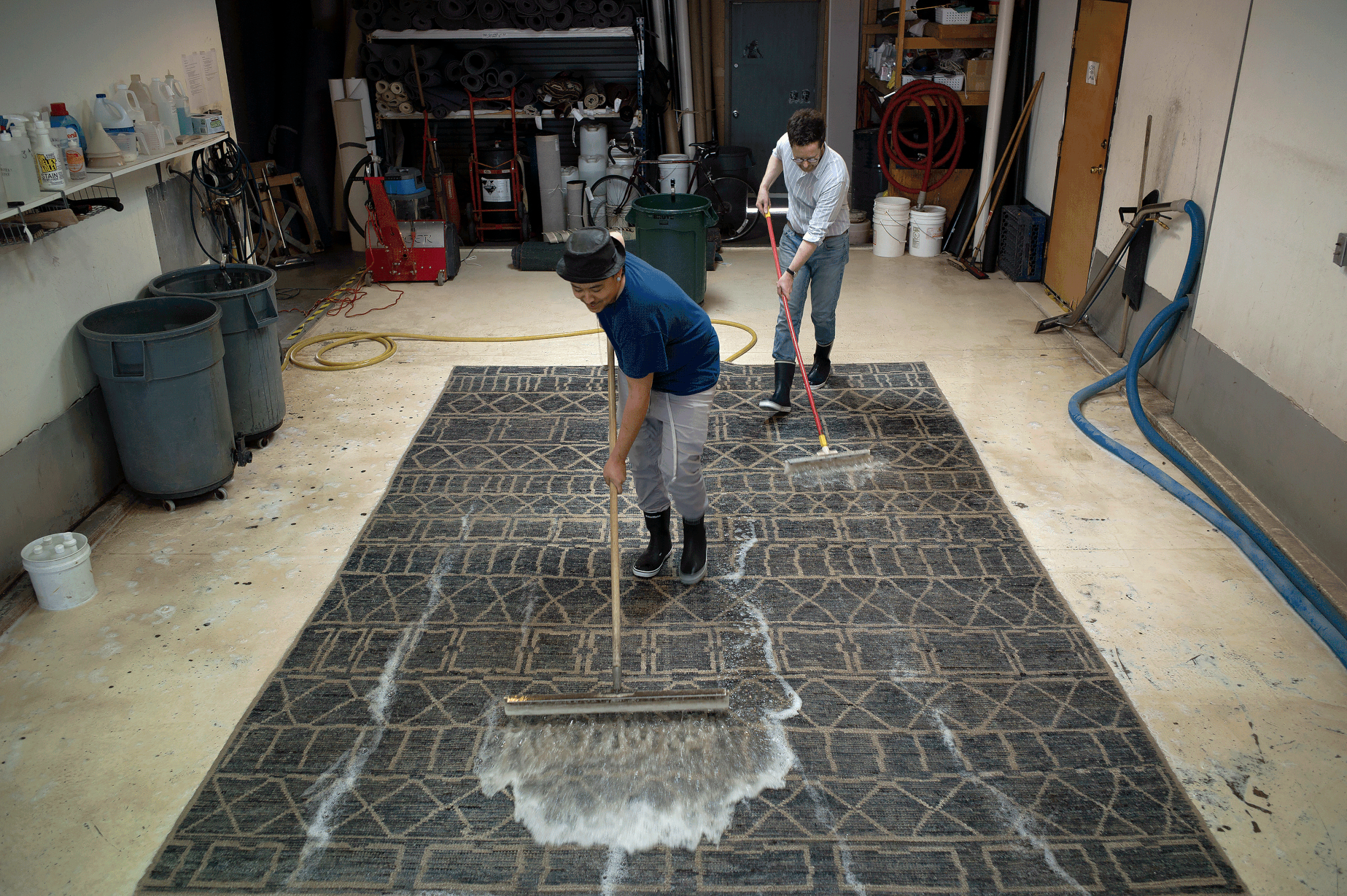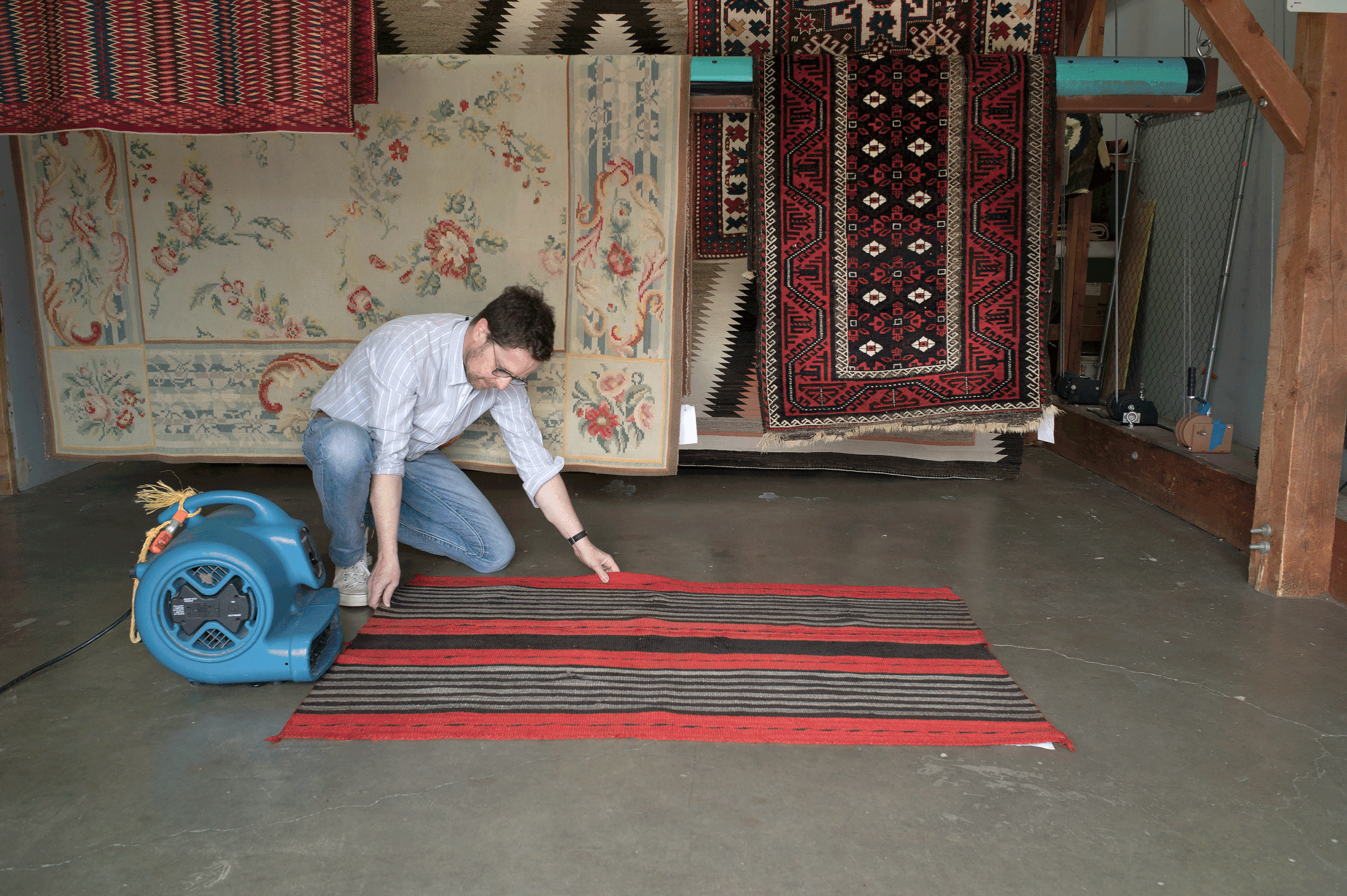— Thorough & Gentle —
Hand-WASHING
Our hand-washing techniques are custom tailored to the specific needs of each rug. Techniques and solutions are formulated depending on structure, type of material, soiling, fragility, and dye type. After complete removal of sandy grit and particulate matter, most rugs are hand washed in water-based solutions; all rugs are thoroughly rinsed to remove dirt, soap, or chemical residue. Our heated drying room ensures complete drying. Blocking/stretching is necessary on many rugs after washing and is done as much as is safely possible. By the time the rug is washed and dried, no allergens (other than the fibers themselves or adhesives used in manufacture) remain in the rug.
Navajo rug cleaning rates are higher than for oriental rugs, due to unstable dyes, softer blanket-like weaves, fragile single-ply construction, tendency toward buckling, as well as other issues. However, success rates are high for the removal of color bleed, pet stains, overall yellowing, and other staining. Wet washing is the recommended method of cleaning Navajo and southwestern textiles, but because of the many complicating factors, it must be done by a responsible, experienced professional.
Deciding how often to have household rugs cleaned depends on extent of foot traffic, staining or pet problems, proximity to an unventilated kitchen or other airborne pollutants, and personal preference regarding the appearance of the rug. Most professional conservators recommend cleaning every three to five years to remove damaging soil, grit, and oily buildup in typical household environments. Allowing rugs to accumulate soil and grit for too long can cause discoloration and degradation of fibers, and can allow certain stains to become permanent. Since over-washing is never recommended, we formulate milder solutions when only light washing is necessary.







